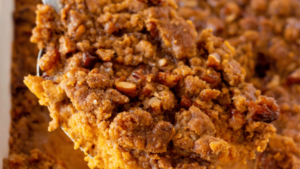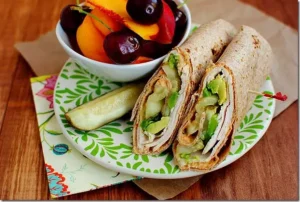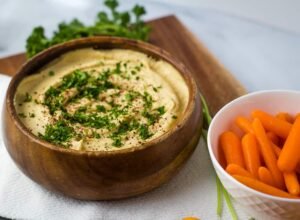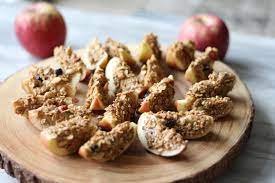
Best Gluten Free Meal Ideas for Weight Loss

Gluten free diets have grown in popularity in recent years, not just among individuals suffering from celiac disease or gluten sensitivity but also among those seeking to reduce weight. Healthy gluten free meals for weight loss exclude foods containing gluten, a protein found in wheat, barley, and rye.
Table of Contents
Introduction
Individuals can reduce inflammation, enhance gastrointestinal health, and perhaps lose weight by relying on gluten free meal ideas. It is crucial to note that merely removing gluten from the diet does not guarantee weight loss. Maintaining a balanced diet and incorporating healthy, gluten free foods into your meals is still vital.

What Exactly is Gluten?
To properly comprehend the relevance of a gluten free diet, it is necessary to first understand the nature of gluten. Gluten is a complicated protein family that plays an important role in baking and the culinary arts. It is mostly found in wheat, although it is also found in barley, rye, and their derivatives. This simple protein blend is responsible for some of the most appreciated qualities of baked foods, including the elasticity that allows dough to stretch and the chewiness that gives bread its delicious texture.
Gluten is essentially a complex mixture of two proteins: gliadin and glutenin. These proteins work together to create gluten’s distinct structure and capabilities. Glutenin, the more stable of the two, is in charge of gluten’s strength and elasticity, providing the framework that gives bread its airy texture and allows it to rise during baking. Gliadin, on the other hand, while contributing to flexibility, is frequently at the center of gluten related health issues.
Gliadin is a protein component of gluten that has been linked to unpleasant effects in certain people. This is especially true in the case of celiac disease, which is a severe autoimmune illness. When people with celiac disease consume gluten containing foods, their immune system attacks the lining of their small intestine. Gliadin, a gluten component, is the primary trigger of this immunological reaction. This constant assault on the intestinal lining can cause severe damage, nutrient malabsorption, and a variety of gastrointestinal issues over time.
Gliadin can be harmful for people who have non celiac gluten sensitivity (NCGS) in addition to celiac disease. While the processes underlying NCGS are still unknown, it is thought that some people may feel gastrointestinal pain and other symptoms in reaction to gliadin even if they do not match the diagnostic criteria for celiac disease or wheat allergy. This highlights the importance of gliadin in the complex world of gluten and emphasizes the need to understand these proteins for people choosing a gluten free lifestyle.
Health Advantages of Gluten Free Meal Ideas
The gluten free diet has gained popularity in recent years, not only for its necessity in controlling certain medical disorders but also for many other health benefits. While it is important to note that a gluten free diet is primarily recommended for those with celiac disease, non celiac gluten sensitivity (NCGS), or wheat allergies, there are significant health benefits to this dietary approach.
- Relief from Symptoms of Celiac Disease

One of the primary reasons to follow a gluten free diet is the relief it brings to people suffering from celiac disease and NCGS. Celiac disease is an autoimmune disorder characterized by severe gluten sensitivity, with even small levels causing a variety of debilitating symptoms. While less well-defined, NCGS appears as a variety of gastrointestinal and extra-intestinal symptoms following gluten ingestion. Both disorders, among other things, can cause abdominal pain, bloating, diarrhea, and exhaustion.
The gluten free diet is a successful strategy for these people since it removes the root of their distress. When gluten is removed from their diet, celiac disease-induced intestinal inflammation reduces, and the body can begin to heal. Eliminating gluten from one’s diet relieves the uncomfortable symptoms associated with NCGS, considerably increasing one’s overall quality of life. This symptom reduction is possibly the greatest significant advantage of a gluten free diet for these specific people.
- Better Digestion

In addition to celiac disease and NCGS, a fraction of people with wheat allergies and irritable bowel syndrome (IBS) report better digestion and less gastrointestinal discomfort when gluten containing items are removed from their diet.
Wheat allergies are caused by an immunological response to wheat proteins, as opposed to the autoimmune reaction seen in celiac disease. Wheat allergies can cause nausea, stomach cramps, and diarrhea. Individuals with wheat allergies can effectively manage their symptoms and enjoy better digestive health by avoiding gluten containing meals.
IBS, a common gastrointestinal illness, causes abdominal pain, bloating, and irregular bowel motions. While individual dietary causes for IBS may vary, some people find relief from their symptoms by limiting their gluten intake. However, it’s important to remember that IBS is a complicated disorder with many different triggers, and a gluten free diet may not be effective for everyone with IBS.
- Lower the Risk of Health Complications

Adhering to a strict gluten free diet is critical for celiac disease patients, not just for symptom relief but also for lowering the risk of long term problems. Celiac disease, if left untreated, can cause nutrient shortages, osteoporosis, and an increased risk of some types of cancer.
Gluten causes damage to the small intestine, which inhibits nutrient absorption. This can lead to deficits in key vitamins and minerals such as iron, calcium, vitamin D, and B vitamins over time. These deficiencies can result in a variety of health problems, such as anemia, osteoporosis, and a compromised immune system.
Furthermore, people with untreated celiac disease are more likely to acquire cancer, notably intestinal lymphoma and small bowel adenocarcinoma. By allowing the small intestine to recover and restoring appropriate nutrient absorption, a gluten free diet protects against these significant consequences.
- Possibility of Weight Loss

A gluten free diet has also garnered appeal as a potential weight loss method. However, it is crucial to note that a gluten free diet is not intrinsically a weight loss diet. Any weight loss connected with this diet is most likely due to other factors.
One rationale for healthy gluten free meals for weight loss is a reduction in processed food consumption. Many gluten containing processed foods are high in refined carbs and sugars, which, when consumed in excess, can contribute to weight gain. Individuals who follow healthy gluten free meals for weight loss change their focus to entire, naturally gluten free foods such as fruits, vegetables, lean meats, and gluten free grains such as quinoa and brown rice. This transition to a more whole-food-based diet may result in better weight management and overall health.
It’s critical to approach healthy gluten free meals for weight loss with the aim of general health in mind, rather than just weight loss. If weight loss is a main concern, it is best to work with a healthcare provider or registered dietitian to design a specific and balanced dietary plan.
- Improved Eating Habits

One major advantage of healthy gluten free meals for weight loss is that they encourage people to pay more attention to their food choices and choose healthier alternatives. Many gluten free diet plans for weight loss stress whole grains such as quinoa, brown rice, millet, and corn, which are high in fiber and important minerals. This trend toward whole, unprocessed foods has the potential to result in a more balanced and healthy diet.
Traditional gluten free diets, on the other hand, may rely primarily on refined grains and processed foods. People may become fatigued and crave more carbohydrates as a result of these refined carbs’ quick rises and subsequent crashes in blood sugar levels. Individuals can balance their blood sugar levels and maintain sustained energy throughout the day by eating gluten free whole grains and whole foods.
Risks of a Gluten Free Diet
While the gluten free diet has significant benefits for people with specific medical issues, it also has its challenges and potential hazards. Understanding these difficulties is critical for anybody contemplating or presently following gluten free meal ideas.
- Nutrient Deficiency

One of the biggest concerns about a gluten free diet is the possibility of vitamin deficiencies. Many gluten containing grains, including wheat, barley, and rye, are high in essential nutrients such as fiber, iron, calcium, and B vitamins. When certain grains are removed from the diet, there is a risk of deficiency in these essential nutrients.
Individuals on a gluten free meal plan for weight loss must make deliberate and informed dietary decisions to reduce the risk of vitamin deficiencies. Gluten free whole grains such as brown rice, quinoa, millet, and gluten free oats can help deliver fiber, iron, and other nutrients that may be deficient. Furthermore, choosing fortified gluten free meals, such as fortified cereals and gluten free bread, can help fill nutritional shortages.
A diet rich in fruits and vegetables is also necessary to guarantee proper vitamin and mineral intake. Individuals on healthy gluten free meals for weight loss might better meet their nutritional demands by expanding their food choices.
Individuals suffering from celiac disease or other medical illnesses that necessitate gluten avoidance should consult with a licensed dietician who specializes in gluten related disorders. These experts can provide individualized advice to guarantee balanced nutrition and address any deficiencies.
- Expensive Choice

The cost of a gluten free diet is another significant challenge. Gluten free products are often more expensive than gluten containing choices. This price discrepancy can be especially difficult for individuals and families because gluten free alternatives to fundamental items like bread, pasta, and cereal can be expensive.
Gluten free products are more expensive because of the unique production techniques and quality control required to avoid cross-contamination with gluten. Many gluten free items are manufactured in dedicated facilities to ensure rigorous gluten free requirements, which raises production costs.
Individuals can reduce the financial impact of gluten free diet plans for weight loss by shopping in bulk, selecting store-brand gluten free products, and producing homemade gluten free versions of their favorite foods. Furthermore, some health insurance policies may cover the increased costs spent as a result of dietary restrictions related to celiac disease or other medical problems, so it’s worth investigating potential coverage alternatives.
- Limited Food Options

One of the major limitations of a gluten free diet is having a limited variety of food options. Gluten is a protein that can be found in a wide range of foods, from bread and pasta to sauces and condiments. Gluten elimination may necessitate the search for alternate items and recipes, which may not always match the flavor and texture of their gluten containing counterparts.
This restriction is most obvious when dining out or traveling. Restaurants may not always provide gluten free menu alternatives, and cross-contamination in commercial kitchens can be an issue. Individuals following gluten free diet plans for weight loss may need to be forceful in explaining their dietary needs to restaurant workers and choosing dining locations wisely.
Furthermore, it might be difficult to obtain gluten free versions of beloved foods or snacks, and not all gluten free goods are equal in terms of taste and texture. Experimenting with different brands and recipes can assist consumers in discovering viable alternatives, but finding the ideal options may take time and patience.
- Cross Contamination
Cross-contamination is a persistent problem for people who have celiac disease. Even minute amounts of gluten can induce symptoms and damage to the small intestine. Cross-contamination can occur through a variety of means, including shared kitchen equipment, utensils, cutting boards, or cookware that has come into contact with gluten containing meals.
Individuals with celiac disease must maintain a gluten free cooking environment to reduce the danger of cross-contamination. Using separate cooking utensils and appliances, designating gluten free storage places, and carefully examining labels to ensure products are certified gluten free and have not been processed on shared equipment are all examples of this.
When dining out, individuals who follow a gluten free meal plan for weight loss should explain their dietary demands to restaurant employees properly and inquire about the restaurant’s cross-contamination prevention practices. Restaurants with gluten free menus or certified gluten free options can also help to reduce the risk.
- Emotional and Social Impact

A gluten free diet can have a profound social and emotional impact. Individuals on healthy gluten free meals for weight loss may feel alone or frustrated in social situations where food is a key focus. They may be apprehensive about accidentally consuming gluten when dining with friends or family, or they may feel pressured to break their dietary rules.
It is critical to locate supportive groups and educate friends and family about dietary restrictions and the significance of preventing cross-contamination in order to overcome these obstacles. There are numerous support groups and online forums for gluten free dieters, providing a sense of belonging and shared experiences.
Individuals can also create techniques for dealing with social circumstances, such as bringing gluten free food to gatherings or suggesting gluten free restaurants when dining out with others. Individuals who maintain a gluten free lifestyle while attending social occasions can benefit from open communication and early planning.
Practical Advice for Gluten Free Lifestyle
Adopting gluten free meal ideas can be both gratifying and difficult. Whether you’re doing it for medical reasons or personal preference, these practical suggestions can help you manage the difficulties of gluten free living and make the transition easier.
- Check Labels

When you start living a gluten free lifestyle, reading food labels becomes a habit. Gluten is frequently hidden in packaged foods, making label reading necessary. Look for gluten free items that have undergone testing and fulfill strict gluten free requirements while following gluten free diet plans for weight loss. Additionally, watch out for gluten containing foods such as wheat, barley, rye, and oats (unless labeled gluten free).
Hidden gluten sources that you should avoid while following healthy gluten free meals for weight loss:
Modified food starch: While corn is the most common source of modified food starch in the United States, it’s important to establish the source because it can occasionally originate from wheat.
Malt extract/flavoring: These additives, which are frequently derived from barley, should be avoided.
Soy sauce: Because traditional soy sauce contains wheat, use gluten free soy sauce or tamari instead.
Thickeners: Wheat flour, for example, can be used to thicken soups, sauces, and gravies.
Remember that gluten can exist in unexpected places, so learning to read labels is essential. You’ll develop a strong eye for spotting safe products over time.
- Home Cooking

Preparing your meals at home is one of the most effective strategies to maintain a gluten free lifestyle. Cooking at home gives you complete control over the ingredients and the cooking process, which reduces the danger of cross-contamination. It also enables you to pursue delicious and safe gluten free meal ideas that are suited to your tastes.
If you’re new to gluten free cooking, there are various tools available to help you get started. Gluten free cookbooks, websites, and cooking apps offer a plethora of recipes and culinary ideas. Experiment with gluten free flours, grains, and pasta to find new flavors and textures that appeal to your palate.
When putting together your gluten free kitchen, make sure you have all of the necessary gluten free tools and cookware, such as separate cutting boards, knives, and toaster bags for gluten free bread. To avoid cross-contamination, proper storage and organization are essential.
Note: There might be affiliate links mentioned here. We may receive a commission if you purchase a product through an affiliate link. There is no additional charge for you. Please do your own research before making any online purchases.
- Keep Gluten Free Staples on Hand

Following healthy gluten free meals for weight loss requires a well-stocked pantry with gluten free essentials. Having gluten free flours, pasta, bread, and grains on hand ensures you’re ready for a wide range of meals.
Some gluten free pantry essentials you need to have while following a gluten free meal plan for weight loss are:
Gluten free all-purpose flour: Use it in baking and cooking as a substitute for wheat flour.
Rice: Keep a variety of rice on hand, including white, brown, and wild rice, to use as versatile side dishes.
Gluten free pasta: Gluten free pasta can be made from rice, corn, quinoa, and other gluten free grains.
Gluten free bread: Look for gluten free bread options or bread mixes that match your preferences and dietary requirements.
These staples serve as the foundation for gluten free meals, making it easier to stick to your dietary restrictions.
- Eating Out

Even while following a gluten free meal plan for weight loss, dining out can be a pleasant experience. However, it is critical that you convey your dietary needs to restaurant staff clearly and take steps to ensure your meal is gluten free.
Here are some gluten free dining tips:
Inform the restaurant: When making a reservation or upon arrival, let the restaurant staff know about your gluten free dietary needs. Make it clear how important it is to avoid cross-contamination.
Inquire about gluten free options: Ask about gluten free menu items or modifications that can be made to meet your requirements according to the gluten free diet plans for weight loss.
Discuss cross-contamination: Inform the waitstaff or chef of your concerns about cross-contamination. To ensure that they take your dietary restriction seriously, explain its severity.
Make an informed decision: Some cuisines, such as Mexican, Thai, and sushi, frequently provide naturally gluten free options. In advance, look up restaurant reviews and menus to find places that are known for accommodating gluten free diners.
When done properly, dining out gluten free can be a pleasant experience. With practice, you’ll be able to identify restaurants that serve gluten free meals that are both safe and delicious.
Educate Yourself
Staying informed on the newest advancements in gluten free living is crucial for sustaining healthy gluten free meals for weight loss. Gluten free labeling rules, product availability, and study findings all vary over time, so it’s crucial to stay up-to-date.
Consider the following strategies to educate yourself:
Follow gluten free advocacy groups and organizations, which often provide helpful information and updates. Subscribe to gluten free lifestyle magazines, blogs, or newsletters for tips, recipes, and news.
Attend gluten free expos and events in your area to discover new products and connect with others on a similar journey. By staying informed, you can make informed decisions about the products you choose, the dietary strategies you implement, and where to find gluten free resources while following a gluten free meal plan for weight loss.
- Consult a Dietitian

If you’re struggling to adjust to gluten free meal ideas, have concerns about nutrient intake, or are dealing with a medical condition like celiac disease or NCGS, consulting a registered dietitian who specializes in gluten related disorders can be immensely beneficial.
A dietitian can provide personalized guidance tailored to your specific needs, helping you plan balanced and healthy gluten free meals for weight loss. They can also assist with meal planning, grocery shopping, and strategies for managing social and emotional aspects of gluten free living.
Gluten Free Meal Ideas for Weight Loss
- Breakfast

- Gluten Free Oatmeal: Oatmeal is inherently gluten free, but make sure to use certified gluten free oats to avoid any cross-contamination. Add some fresh fruit, such as berries or bananas, and a handful of nuts or seeds for some healthy fats and protein.

2.Gluten Free Banana Pancakes: Mash up a ripe banana and mix with two eggs and a teaspoon of gluten free baking powder. Cook in a non-stick pan till golden brown. Top with some fresh berries and a drizzle of honey.

3.Gluten Free Greek Yogurt Parfait: Layer gluten free granola, Greek yogurt, and fresh fruit in a jar or bowl for a quick and easy breakfast.

4.Gluten Free Breakfast Burrito: Use a gluten free wrap, scrambled eggs, black beans, avocado, and salsa for a substantial breakfast that is easy to take on-the-go.

5.Gluten Free Sweet Potato: Cut a sweet potato into thin pieces and cook in the toaster or oven. Top with avocado, scrambled eggs, or almond butter for a wonderful and filling breakfast.

- Gluten Free Breakfast Bowl: Mix together gluten free oats, chia seeds, almond milk, and berries for a nutrient-packed breakfast bowl.

- Gluten Free Breakfast Wrap: Use a gluten free wrap, scrambled eggs, spinach, and goat cheese for a delightful and hearty breakfast wrap.
- Lunch

- Gluten Free Quinoa Salad: Cook quinoa according to package instructions and add chopped veggies such as cucumber, tomato, and bell peppers. Top with a homemade dressing made with olive oil, lemon juice, and herbs.

2.Gluten Free Tuna Salad: Mix canned tuna with Greek yogurt, diced celery, and onion. Serve on a bed of lettuce or with gluten free crackers.

3.Gluten Free Zucchini Noodle Salad: Use a spiralizer or julienne peeler to create zucchini noodles. Toss with cherry tomatoes, olives, feta cheese, and a homemade dressing made with olive oil, lemon juice, and garlic.

4.Gluten Free Chicken Caesar Wrap: For a wonderful and satisfying lunch, combine a gluten free wrap, cooked chicken, romaine lettuce, and homemade Caesar dressing.

5.Gluten Free Turkey and Avocado Wrap: For a quick and easy lunch, combine a gluten free wrap, turkey, avocado, and vegetables.

6.Gluten Free Tuna Stuffed Avocado: Combine canned tuna, Greek yogurt, diced celery, and onion in a mixing bowl. Serve in a half avocado for a nutritious and full lunch.

7.Gluten Free Chickpea Salad: For a protein-packed and flavorful salad, combine chickpeas, diced veggies, and a homemade dressing.
- Dinner

- Gluten Free Baked Salmon: To make a tasty and healthy dinner, coat salmon fillets in gluten free breadcrumbs and bake in the oven. Serve alongside roasted vegetables like broccoli, asparagus, or sweet potato.

2.Gluten Free Spaghetti Squash Pad Thai: For a gluten free variation of this famous recipe, substitute spaghetti squash for the noodles. For a savory supper, add shrimp or chicken, bean sprouts, carrots, and homemade peanut sauce.

3.Gluten Free Chicken Fajitas:
In a skillet, cook sliced chicken, onions, and bell peppers with homemade fajita spice. With gluten free tortillas, salsa, and guacamole, serve.

4.Gluten Free Vegetable Stir-Fry: In a wok, stir-fry broccoli, carrots, mushrooms, and bell peppers with gluten free soy sauce and garlic. Serve alongside brown rice or quinoa.

5.Gluten Free Baked Chicken Parmesan: Coat chicken breast with gluten free breadcrumbs and bake with marinara sauce and mozzarella cheese in the oven.

6.Gluten Free Cauliflower Fried Rice: Instead of rice, use riced cauliflower for a low-carb, gluten free variation of this popular dish. For a tasty supper, add vegetables, eggs, and soy sauce.

7.Gluten Free Grilled Steak and Veggies: For a quick and healthy dinner, grill steak and your favorite veggies like zucchini, peppers, and onions.
- Snacks

1.Gluten Free Hummus: For a pleasant and healthful snack, serve with gluten free crackers or vegetables.

2.Gluten Free Trail Mix: For a quick and easy snack, combine gluten free nuts and seeds like almonds, cashews, and pumpkin seeds with dried fruit like raisins or cranberries.

3.Gluten Free Energy Balls: To create these simple and tasty energy balls, combine gluten free oats, nut butter, and honey. Add in chia seeds, flax seeds, or chocolate chips for added taste and nutrients.

4.Gluten Free Apple Slices with Almond Butter: Slice up an apple and dip in almond butter for a pleasant and full snack that is filled with protein and healthy fats.

5.Gluten Free Rice Cakes with Almond Butter: Top rice cakes with almond butter and sliced bananas or berries for a quick and easy snack.

6.Gluten Free Popcorn: Popcorn is naturally gluten free and can be seasoned with herbs, spices, or nutritional yeast for a delightful and low-calorie snack.

7.Gluten Free Veggie Chips: Slice up veggies such as sweet potatoes or beets and bake in the oven for a crunchy and healthful snack.
FAQs
What is a gluten free diet, and who should consider following it?
A gluten free diet excludes foods containing gluten, a protein found in wheat, barley, and rye. It’s primarily given for patients with certain medical disorders including celiac disease, non-celiac gluten sensitivity (NCGS), or wheat allergies. However, some people choose to embrace it for supposed health benefits or weight management.
What is gluten, and why is it dangerous for some individuals?
Gluten is a complex family of proteins found in wheat, barley, rye, and their derivatives. Gliadin, a particular component of gluten, can cause unfavorable reactions in celiac disease patients, resulting in intestine damage and a variety of symptoms. NCGS is another disorder in which people who do not have celiac disease or a wheat allergy experience gastrointestinal discomfort and other symptoms after consuming gluten.
What are the health benefits of avoiding gluten?
A gluten free diet can bring considerable benefits to people who have celiac disease or NCGS, such as alleviation from symptoms like abdominal pain, bloating, diarrhea, and exhaustion. It can also help people with wheat allergies or irritable bowel syndrome (IBS) with their digestion. Furthermore, it lowers the risk of long-term consequences for celiac disease patients, such as vitamin shortages, osteoporosis, and some malignancies.
Is it possible to lose weight on a gluten free diet?
A gluten free diet is not, by definition, a weight-loss program. Some people may lose weight on a gluten free diet because they eat fewer processed meals and eat more complete, naturally gluten free foods such fruits, vegetables, and gluten free grains. Weight loss should be treated holistically, taking into account general diet and lifestyle aspects.
How can I maintain a gluten free diet while avoiding vitamin deficiencies?
In order to follow a gluten free diet that is balanced, consume gluten free whole grains such as quinoa, brown rice, and millet. Include a variety of fruits and vegetables in your diet to acquire the vitamins and minerals you need. If you are concerned about nutrient intake, consider fortified gluten free foods and visit a trained dietitian.
Is gluten free food more expensive than ordinary food, and how can I budget for it?
Gluten free items are frequently more expensive than gluten containing versions. This is owing to the use of sophisticated manufacturing procedures and quality control to avoid cross-contamination. To save money, consider shopping in bulk, selecting store-brand gluten free products, and producing homemade versions of your favorite recipes.
What are the disadvantages of a gluten free diet in terms of food availability and cross-contamination?
Gluten free diets might limit your dietary selections, especially when dining out or traveling. Cross-contamination is a risk, particularly for people who have celiac disease. To address these issues, explain your dietary preferences explicitly when dining out, select establishments that offer gluten free options, and be mindful of cross-contamination in your own kitchen.
How can I deal with the social and emotional consequences of a gluten free diet?
In social situations, adhering to a gluten free diet can lead to feelings of isolation or irritation. Find supportive networks, educate friends and family about your dietary limitations, and plan methods for social gatherings, such as bringing gluten free dishes or recommending places with gluten free options, to help you handle this.
What are some helpful hints for living a gluten free lifestyle?
Reading food labels carefully, cooking at home to control ingredients and minimize cross-contamination, storing gluten free pantry basics, dining out with caution, remaining knowledgeable about gluten free living, and seeing a dietician for tailored counseling are all practical ideas.
Can you provide me with some gluten free food suggestions at different times of the day?
Certainly! Here are some gluten free dinner suggestions:
- For breakfast, try gluten free oatmeal with berries and nuts, gluten free banana pancakes, Greek yogurt parfaits, breakfast burritos with gluten free wrap, sweet potato toast, a breakfast bowl, or a breakfast wrap.
- Quinoa salad, tuna salad with gluten free crackers, zucchini noodle salad, chicken Caesar wrap with gluten free wrap, turkey and avocado wrap, tuna-stuffed avocado, or chickpea salad for lunch.
- Dinner options include baked salmon with roasted vegetables, spaghetti squash Pad Thai, chicken fajitas using gluten free tortillas, vegetable stir-fry with brown rice or quinoa, baked chicken Parmesan, cauliflower fried rice, or grilled steak with veggies.
- Snacks include hummus with gluten free crackers or vegetables, trail mix, energy balls, apple slices with almond butter, rice cakes with almond butter and fruit, popcorn, and homemade veggie chips.
Conclusion
Going gluten free might be difficult, particularly if you are accustomed to eating a lot of bread, pasta, and other gluten containing foods. You may still enjoy tasty meals and snacks while supporting weight loss and overall health by including nutritious, gluten free options into your diet.
When selecting gluten free foods, it is critical to carefully read labels and avoid any products that may include hidden gluten sources, such as soy sauce or malt vinegar. Concentrate on full, unprocessed meals like fruits and vegetables, lean proteins, and gluten free grains like quinoa, brown rice, and oats.
Including these gluten free food ideas in your diet is an excellent approach to begin your weight loss journey while still enjoying tasty, satisfying meals. Remember that losing weight is about making good choices and eating a balanced diet, not merely avoiding certain foods or food groups.
Disclaimer: The information provided in this article is for educational purposes only and should not be considered as a substitute for medical advice. Consult a healthcare professional before implementing any home remedies or making significant changes to your lifestyle.






